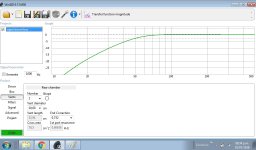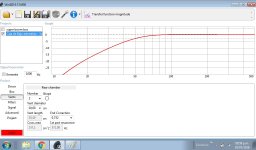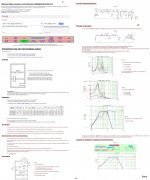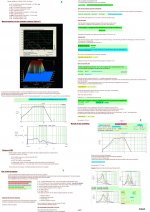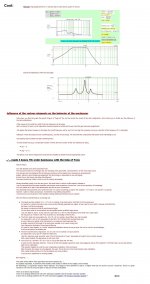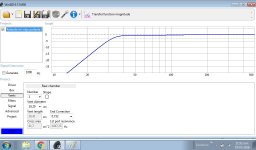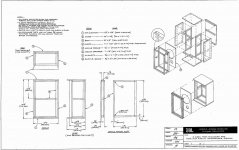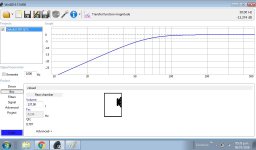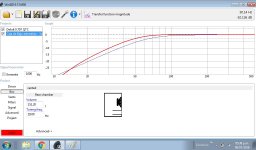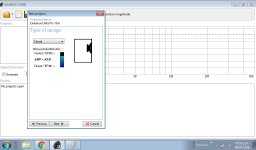its a tradeoff - - I did not use the lossy Le option for the sims below. Lower Le would be nice and like the idea of a 6th order reflex - - when planned from the start


Last edited:
I have been studying the different alignments for a bassreflex box .....
It is already decided that there will be two boxes of 150 liters tuned to 30 hertz.
The main drawback is that for this size I must find an alignment that allows me to use tuning tubes (no matter how many of them) that are not very deep, given the dimensions of the box ....
I have found that (WinIsd by) in some cases the tube exceeds 100 cm, so I discard those options.
Here is a good article explaining the pros and cons of each alignment.
I think I already have it !!! 😉🙂
Bass reflex alignments explained - Step by step | Audio Judgement
" SBB4 or Super Forth-Order Boom Box – is characterized by a large box, low tuning frequency (longer vent) and good transient response (which puts the term boom-box out of place)."
It is already decided that there will be two boxes of 150 liters tuned to 30 hertz.
The main drawback is that for this size I must find an alignment that allows me to use tuning tubes (no matter how many of them) that are not very deep, given the dimensions of the box ....
I have found that (WinIsd by) in some cases the tube exceeds 100 cm, so I discard those options.
Here is a good article explaining the pros and cons of each alignment.
I think I already have it !!! 😉🙂
Bass reflex alignments explained - Step by step | Audio Judgement
" SBB4 or Super Forth-Order Boom Box – is characterized by a large box, low tuning frequency (longer vent) and good transient response (which puts the term boom-box out of place)."
Here the sims ...😀
Attachments
-
 Alineacion boom box - 151,2 litros 2 tubos de 10 cm respuesta en frecuncia.jpg121.7 KB · Views: 156
Alineacion boom box - 151,2 litros 2 tubos de 10 cm respuesta en frecuncia.jpg121.7 KB · Views: 156 -
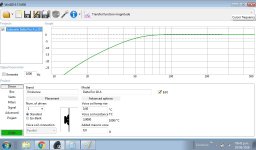 Alineacion boom driver.jpg143.6 KB · Views: 149
Alineacion boom driver.jpg143.6 KB · Views: 149 -
 Boom box - Caja 150 litros.jpg125.5 KB · Views: 158
Boom box - Caja 150 litros.jpg125.5 KB · Views: 158 -
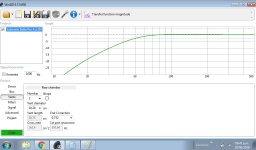 Boom box -Vents -150 lts.jpg123 KB · Views: 157
Boom box -Vents -150 lts.jpg123 KB · Views: 157 -
 Impedancia minima 6 ohms.jpg122.2 KB · Views: 79
Impedancia minima 6 ohms.jpg122.2 KB · Views: 79 -
 Retardo de grupo 15 ms a 20 hertz.jpg114.7 KB · Views: 67
Retardo de grupo 15 ms a 20 hertz.jpg114.7 KB · Views: 67 -
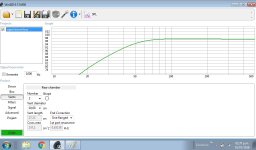 Sound presion level.jpg127.6 KB · Views: 64
Sound presion level.jpg127.6 KB · Views: 64
The box will have two cylindrical ports of 10 cm diameter (internal) and an effective physical length of 19.92 cm each.
I have made the checks according to the WinIsd tutorial, and they give a correct result.
Acoustic length = 27.22 cm
Physical length = 19.92 cm
The difference between these values gives us a difference of 7.30 cm that must be subtracted from the acoustic value.
Which is the same if we use the correction factor for a tube with free end and one flush (or with flange), this is multiplying by 0.732
For those who want to internalize more, I leave two links.
I trust that the version of WinIsd that I am using has fixed some errors that are mentioned here.
I hope so....🙂🙄
WinISD – a beginners tutorial | Midwest Audio Club
Calculating Subwoofer Port Length - Not So Simple - AVS Forum | Home Theater Discussions And Reviews
I have made the checks according to the WinIsd tutorial, and they give a correct result.
Acoustic length = 27.22 cm
Physical length = 19.92 cm
The difference between these values gives us a difference of 7.30 cm that must be subtracted from the acoustic value.
Which is the same if we use the correction factor for a tube with free end and one flush (or with flange), this is multiplying by 0.732
For those who want to internalize more, I leave two links.
I trust that the version of WinIsd that I am using has fixed some errors that are mentioned here.
I hope so....🙂🙄
WinISD – a beginners tutorial | Midwest Audio Club
Calculating Subwoofer Port Length - Not So Simple - AVS Forum | Home Theater Discussions And Reviews
A single tube is the most acoustically efficient, so with a change in shape and/or each additional one will need to be longer for a given tuning.
GM
GM
A single tube is the most acoustically efficient, so with a change in shape and/or each additional one will need to be longer for a given tuning.
GM
academia50 :
I have found that (WinIsd by) in some cases the tube exceeds 100 cm, so I discard those options.
Thank you but that aspect is already contemplated and I do not want to bend the tube.
I will have to despise that improvement that you say in the acoustic efficiency...
😉
Attachments
Continuing with the simulations to make sure of the results (luckily) 😀 I have noticed that the Low Extended - 3 db and Boom Box alignments are exactly identical ...
They throw as results the same ports and volume of the box, with equal Fs...🙂
Wow, does anyone know why this is, or is it a Win Isd error? 😕
They throw as results the same ports and volume of the box, with equal Fs...🙂
Wow, does anyone know why this is, or is it a Win Isd error? 😕
Attachments
I was assaulted by a thought ... and if I try a simulation with a sealed cabinet ? 😱
I think it is not very surprising that the Eminence designs for this transducer are all bass reflex, because what they offer is high SPL / watts in the pass band from F3 up. Who cares about transients at low volume in a rock show? I think nobody, but the fact is that I need just 40/50 hertz to below to complement two large cabinets in a domestic use .....
The Qts of Delta Pro A is 0.32 .....
Bass reflex alignments explained - Step by step | Audio Judgement
Sealed vs bass reflex alignments
" Here are the sound characteristics corresponding to different values of Qtc for sealed boxes :
Qtc = 0.5 : Perfect transients, but low efficiency.
Qtc = 0.707 : This is the number most people try to reach for, as it gives good transients and flat response with minimum cutoff.
0.7 < Qtc < 1.2 : Better efficiency, somewhat degraded transients, steeper roll off.
Qtc > 1.2 : High efficiency, bad transients, bad frequency response.
Since, the ported enclosure is more complex than the sealed box, it is not as easy as choosing a value of Qtc. Instead, there are several well known bass reflex alignments, from which you can choose from. I made the analogy with the sealed enclosure, because it is easier to understand, but for bass reflex, the process is much more complex. Making slight variations for Q in a sealed box, will result in a minor alteration of the response. However, for bass reflex, can cause notable increases or decreases in the bass region, which are referred to as “misalignments”. Ported boxes have much steeper roll-off, and if confronted with misalignment issues, can cause serious transient ringing.
So, to determine to volume of the box and the size of the vent, you first need to choose a certain alignment. Because different drivers have different parameters, and therefore different drawbacks, you need to choose an alignment that compliments your driver, so that you will get, more or less, a flat response."
I was assaulted by a thought ... and if I try a simulation with a sealed cabinet?
I think it is not very surprising that the Eminence designs for this transducer are all bass reflex, because what they offer is high SPL / watts in the pass band from F3 up. Who cares about transients at low volume in a rock show? I think nobody, but the fact is that I need just 40/50 hertz to below to complement two large cabinets in a domestic use .....
The Qts of Delta Pro A is 0.32 .....
And then, to my surprise, the simulation is very good, here are the graphics ...
What do you think ? 250 watts/4 ohms will be enough to make up the difference in SPL ?
(Remember that there are two cabinets with 18 inch´s drivers in a home environment !)
Attachments in next post, I must interrupt now ...😉 😱
I think it is not very surprising that the Eminence designs for this transducer are all bass reflex, because what they offer is high SPL / watts in the pass band from F3 up. Who cares about transients at low volume in a rock show? I think nobody, but the fact is that I need just 40/50 hertz to below to complement two large cabinets in a domestic use .....
The Qts of Delta Pro A is 0.32 .....
Bass reflex alignments explained - Step by step | Audio Judgement
Sealed vs bass reflex alignments
" Here are the sound characteristics corresponding to different values of Qtc for sealed boxes :
Qtc = 0.5 : Perfect transients, but low efficiency.
Qtc = 0.707 : This is the number most people try to reach for, as it gives good transients and flat response with minimum cutoff.
0.7 < Qtc < 1.2 : Better efficiency, somewhat degraded transients, steeper roll off.
Qtc > 1.2 : High efficiency, bad transients, bad frequency response.
Since, the ported enclosure is more complex than the sealed box, it is not as easy as choosing a value of Qtc. Instead, there are several well known bass reflex alignments, from which you can choose from. I made the analogy with the sealed enclosure, because it is easier to understand, but for bass reflex, the process is much more complex. Making slight variations for Q in a sealed box, will result in a minor alteration of the response. However, for bass reflex, can cause notable increases or decreases in the bass region, which are referred to as “misalignments”. Ported boxes have much steeper roll-off, and if confronted with misalignment issues, can cause serious transient ringing.
So, to determine to volume of the box and the size of the vent, you first need to choose a certain alignment. Because different drivers have different parameters, and therefore different drawbacks, you need to choose an alignment that compliments your driver, so that you will get, more or less, a flat response."
I was assaulted by a thought ... and if I try a simulation with a sealed cabinet?
I think it is not very surprising that the Eminence designs for this transducer are all bass reflex, because what they offer is high SPL / watts in the pass band from F3 up. Who cares about transients at low volume in a rock show? I think nobody, but the fact is that I need just 40/50 hertz to below to complement two large cabinets in a domestic use .....
The Qts of Delta Pro A is 0.32 .....
And then, to my surprise, the simulation is very good, here are the graphics ...
What do you think ? 250 watts/4 ohms will be enough to make up the difference in SPL ?
(Remember that there are two cabinets with 18 inch´s drivers in a home environment !)
Attachments in next post, I must interrupt now ...😉 😱
Here several comparatives.
The sealed box is much higher in almost all parameters, less in SPL/watts .
The transients are excellent in sealed !!!
Everything is a commitment, is it true ..... what to do ? 😕
Although it will always be easier to buy some Inuke amplifier with DSP and sell the Dayton, than to redo the boxes ............😀
The sealed box is much higher in almost all parameters, less in SPL/watts .
The transients are excellent in sealed !!!
Everything is a commitment, is it true ..... what to do ? 😕
Although it will always be easier to buy some Inuke amplifier with DSP and sell the Dayton, than to redo the boxes ............😀
Attachments
-
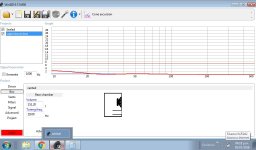 Vented Cone Excursion ( 6.70 mm Xmax).jpg129.5 KB · Views: 70
Vented Cone Excursion ( 6.70 mm Xmax).jpg129.5 KB · Views: 70 -
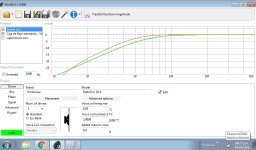 Transfer function magnitude Sealed vs. Bass extended.jpg142.5 KB · Views: 73
Transfer function magnitude Sealed vs. Bass extended.jpg142.5 KB · Views: 73 -
 SPL maxima comparativa.jpg128 KB · Views: 87
SPL maxima comparativa.jpg128 KB · Views: 87 -
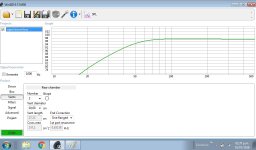 Sound presion level.jpg127.6 KB · Views: 64
Sound presion level.jpg127.6 KB · Views: 64 -
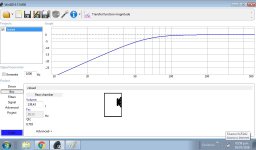 Sealed 140 Litros QTC 0.707.jpg118.8 KB · Views: 69
Sealed 140 Litros QTC 0.707.jpg118.8 KB · Views: 69 -
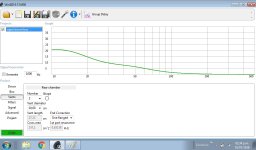 Retardo de grupo 15 ms a 20 hertz.jpg114.7 KB · Views: 69
Retardo de grupo 15 ms a 20 hertz.jpg114.7 KB · Views: 69 -
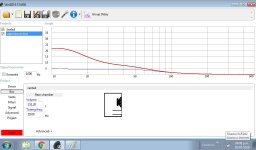 Group delay super boom box.jpg114.8 KB · Views: 71
Group delay super boom box.jpg114.8 KB · Views: 71 -
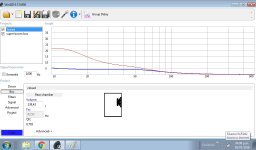 Group delay sealed.jpg114.3 KB · Views: 68
Group delay sealed.jpg114.3 KB · Views: 68 -
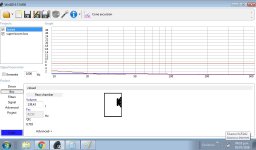 Cone excursion Sealed vs. vented.jpg128.7 KB · Views: 67
Cone excursion Sealed vs. vented.jpg128.7 KB · Views: 67 -
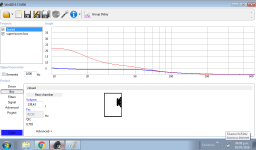 comparativa entre sealed y vented.png55.7 KB · Views: 71
comparativa entre sealed y vented.png55.7 KB · Views: 71
Last edited:
Hi All,
FYI: The Driver T/S impact on Speaker Boxes can be improved by using more refined Calculations: Examples can be found in the submitted Pictures:
b🙂
FYI: The Driver T/S impact on Speaker Boxes can be improved by using more refined Calculations: Examples can be found in the submitted Pictures:
b🙂
Attachments
-
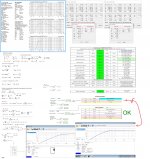 Eminence-DeltaPro-18A.JPG867.7 KB · Views: 90
Eminence-DeltaPro-18A.JPG867.7 KB · Views: 90 -
 petoindominique(00).JPG527.2 KB · Views: 85
petoindominique(00).JPG527.2 KB · Views: 85 -
 petoindominique(0).JPG912.2 KB · Views: 70
petoindominique(0).JPG912.2 KB · Views: 70 -
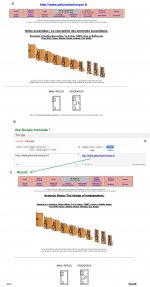 petoindominique(1).JPG336.3 KB · Views: 69
petoindominique(1).JPG336.3 KB · Views: 69 -
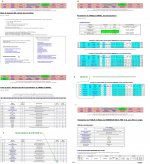 petoindominique(2).JPG830.5 KB · Views: 78
petoindominique(2).JPG830.5 KB · Views: 78 -
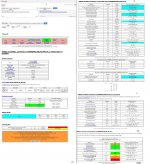 petoindominique(3).JPG881.4 KB · Views: 79
petoindominique(3).JPG881.4 KB · Views: 79 -
 petoindominique(4).JPG923.1 KB · Views: 72
petoindominique(4).JPG923.1 KB · Views: 72 -
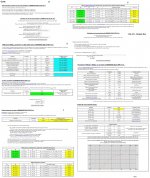 petoindominique(5).JPG859.5 KB · Views: 73
petoindominique(5).JPG859.5 KB · Views: 73
Last edited:
Hi Bjorno
Extraordinary work! Thank you very much !
It will take me a while to understand so many calculations ... but surely the experts here will give us their opinions.
In your opinion, is this speaker appropriate for a sealed box?
PS: Thanks to your previous T / S data on JBL LE14A, out of curiosity I was able to simulate the same in Win Isd.
(see post number 30)
Well, the result once again surprises me, looks better than Delta Pro 18 A ..... This box was calculated by JBL in the 70s, I think that in those years there was no simulation software, but the mathematical formulas are the same as always...
Even the tuning tube matches WinIsd's calculation!
This gives me confidence in my simulations.
http://www.lansingheritage.org/images/jbl/plans/1975-kit-plans/page03.jpg
Extraordinary work! Thank you very much !

It will take me a while to understand so many calculations ... but surely the experts here will give us their opinions.
In your opinion, is this speaker appropriate for a sealed box?
PS: Thanks to your previous T / S data on JBL LE14A, out of curiosity I was able to simulate the same in Win Isd.
(see post number 30)
Well, the result once again surprises me, looks better than Delta Pro 18 A ..... This box was calculated by JBL in the 70s, I think that in those years there was no simulation software, but the mathematical formulas are the same as always...
Even the tuning tube matches WinIsd's calculation!
This gives me confidence in my simulations.
http://www.lansingheritage.org/images/jbl/plans/1975-kit-plans/page03.jpg
Attachments
Sory Off topic......😀
I am currently watching the football match between Sweden and England in the World Cup.
I think you can imagine who is my favorite ......😉
Luck !
I am currently watching the football match between Sweden and England in the World Cup.
I think you can imagine who is my favorite ......😉
Luck !
you mentioned sealed boxes - here's one, 90 liter, with a low loss 500uF series cap - I did not use the lossy Le function. With some stuffing it might be made a bit smaller.


you mentioned sealed boxes - here's one, 90 liter, with a low loss 500uF series cap - I did not use the lossy Le function. With some stuffing it might be made a bit smaller.
Thanks freddi !
The graphics are very similar to those of WinIsd, (without the 500 uf capacitor), I see that it also raises the group delay a lot...
What is the intention to add this ? 😕
the cap when chosen right - extends the bass response; works as a highpass filter, and can make the sealed box somewhat smaller. 40+ years ago I forgot and turned off a Citation tube preamp hooked to a Citation 12 amp. The turn-off transient blew 4 SEAS 10 inch woofers in sealed/aperiodic Dynaco cabinets. A series cap could have been nice then 😀
the cap when chosen right - extends the bass response; works as a highpass filter, and can make the sealed box somewhat smaller. 40+ years ago I forgot and turned off a Citation tube preamp hooked to a Citation 12 amp. The turn-off transient blew 4 SEAS 10 inch woofers in sealed/aperiodic Dynaco cabinets. A series cap could have been nice then 😀
Of course it would have been useful there ... when I listen to high volumes with DTQWTII I always remember that the midrange speaker does not have a high or low pass capacitor. All the signal goes directly to the driver. However, I think that Troels is right:
"The best step capacitor is the one that does not exist"
With regard to the alignment, I have chosen "Unassisted flat alignments", instead of "Unassisted non-flat alignments"
Bass reflex alignments explained - Step by step | Audio Judgement
I keep investigating:
Sealed 137 liters -13 db to 30 hertz
Vented 150 liters -10 db to 30 hertz
- 3 db of loss are compensated with double the power, but I really lose 3 db if there will be two boxes ? 🙂
In addition I will have the gain of the room / location in the corner
and I have obtained the magic number 0.707 for excellent transients with less size than in bass reflex.
There will be no problem with the exact calculations of tuning tubes ...😀
EBP is correct too, 83.8 is apt according to this article for any of the two tunings, vented or sealed .....
Enclosure Dilemma
I think 250 watts / 4 ohms will be more than enough.....
Sealed 137 liters -13 db to 30 hertz
Vented 150 liters -10 db to 30 hertz
- 3 db of loss are compensated with double the power, but I really lose 3 db if there will be two boxes ? 🙂
In addition I will have the gain of the room / location in the corner
and I have obtained the magic number 0.707 for excellent transients with less size than in bass reflex.
There will be no problem with the exact calculations of tuning tubes ...😀
EBP is correct too, 83.8 is apt according to this article for any of the two tunings, vented or sealed .....
Enclosure Dilemma
I think 250 watts / 4 ohms will be more than enough.....

Attachments
- Status
- Not open for further replies.
- Home
- Loudspeakers
- Subwoofers
- Vintage JBL for subwofer
